
.
DECEASED HONORARY
LIFE MEMBERS
American
Guild of English Handbell Ringers, Inc.

.
DECEASED HONORARY
LIFE MEMBERS
American
Guild of English Handbell Ringers, Inc.
The granting of an Honorary Life Membership in the AGEHR is reserved " ... for those who have made outstanding contributions to the art of handbell ringing. This status is to be deemed the highest honor which the AGEHR can bestow, and is to be reserved for individuals of the highest caliber."
Book of Motions - #0015, 6/75
The following deceased individuals had been granted this highest honor. A brief biographic sketch, including the year each was honored and the year of death, may be seen by clicking on the name. A photograph may also be available.
Bessie B. Erb Ellen Jane Lorenz Porter Helen Runkle Lawrence Fink Willard Markey Ronald J. Schink Betty Garee W. D. (Mac) McKeehan Frederick Sharpe Dr. Robert Hieber Marvin Reecher Margaret Shurcliff Much of the information has been gleaned from the writings of Martha Lynn Thompson, National Secretary of AGEHR during the early 1990's. Other has been gleaned from "In Memoriam" articles and interviews in OVERTONES, and personal knowledge of the web page designer.
The people who have received this highest honor of AGEHR contributed greatly to the formation and development of the American Guild of English Handbell Ringers, and their influence is still seen and felt throughout the organization and the world of handbells. In many cases, their work results in the training and raising of new leadership to carry on their work. They are no longer with us, but their contributions and influences remain.
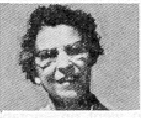 Bessie
Erb
Bessie
Erb
"Bessie (Mrs. Norman) Erb used her inexhaustible energy and organizing ability to spread the gospel of bellringing. Together with Mrs. Shurcliff, Bessie Erb gathered the bands in the Boston region into an organized unit - the New England Guild of English Handbell Ringers - which met annually for exchanging ideas and ringing their best, but also for sociability's sake. When it became evident that many people outside New England were interested in learning to ring and to start bands in their hometowns, Mrs. Shurcliff and Mrs. Erb conceived of a nation-wide organization. Together they stirred up interest and ideas until the American Guild came into being. Bessie Erb took over the editorship of OVERTONES, then the Presidency of the Guild, succeeding Mrs. Shurcliff in 1957.
"In 1960, Mrs. Erb expressed her feelings about what the Guild could do for its members.
"'Have you ever considered what it means to belong to a unique organization that in less than six years had grown into full bloom? Springing from an old English custom, it has become a modern organization filled with the spirit of research, experimentation and service characteristic of the scientific age in which we live ... since the handbell is comparatively new in America, it presents an opportunity to grow in a new area. Members of the American Guild of English Handbell Ringers are challenged to experiment in making satisfactory handbells; to discover new uses for the handbell as a musical instrument; to learn to play a new instrument; and to create music for handbells. We are given innumerable opportunities to serve; as directors of young people and adults; as contributors to the service of worship .. and as bringers of joy to thousands of people for whom we ring.' (OVERTONES, Vol. 6, #2
"Ever filled with ideas, love of people, and the ability to get things moving, Bessie Erb started with a group of ringers at her retirement home, knitting the ringers together with the magical bonds created by bellringing as a team. Never did she herself lose interest in bells, ringing, bellringers, or the American Guild of English Handbell Ringers."
Besssie was named Honorary Life Member in 1965.
Larry introduced handbells to the Seattle World's Fair in 1962, and taught ringing in four junior high schools and one high school in the Seattle area.
He has served on many AGEHR committees, contributed articles on handbells in education in OVERTONES, and has attended numerous festivals over the years.
Larry was awarded the Honorary Life Membership in 1994. It was a pleasure to see Larry and other family members in 1997 at the National Directors' Seminar in Spokane, WA. Larry died in July of 1998, after an extended illness.
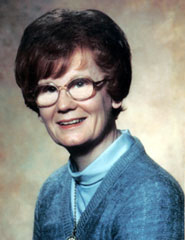 Betty Garee
Betty GareeIn his sermon at the memorial service for Betty Garee in May, 1986, her minister, James Neevel, included the quotation, "Some people come into our lives and quickly go. Some stay for a while and leave footprints in our hearts, and we are never, ever the same." So many of us who knew her can say this of Betty. In her humble, gracious way, she touched the lives of thousands of people all over this country.
We know Betty as the composer/arranger of many wonderful handbell pieces, but what about Betty, the person? She was a graduate of the Oberlin Conservatory of Music in Oberlin, OH, and, for a while, served on its faculty in the Music Theory Department. She also held a Master of Music degree in piano and theory from Columbia University in New York.
Her husband, Bill, and their family lived in Poughkeepsie, NY where, from 1972-86 she directed the youth and adult handbell choirs at the New Hackensack Reformed Church in Wappingers Falls, NY. There she developed a multi-choir program of five handbell choirs and three singing choirs. Her Chlorine Ringers concertized widely in the United States and in Canada and the Netherlands, and Betty was often a clinician and conductor for local, Area, and National workshops and festivals.
She served as Secretary of Area II, and during the last few summers of her life, she taught handbell classes at the Chautauqua Institute in Chautauqua, NY.
Within her lifetime, Betty became a world-renowned composer/arranger of music for handbell choirs. She wrote more than thirty pieces, some including various instruments, including the buggy whip! Although she did accept a few commission pieces, most of her writing was done for her beloved Chlorine Ringers.
Betty taught her ringers to ring with authority. "If you're going to make a mistake, at least make one that can be heard!" With her perfect pitch, she could always discover the missing or wrong note. Always doing so with a smile, she taught her ringers the importance of teamwork, cooperation, sharing, and commitment.
In May of 1986, by action of the Executive Committee of the AGEHR, Betty B. Garee was named an Honorary Life Member. She received the letter just prior to her untimely death on May 27, and she was delighted with the news. In the letter informing her of this honor, she was told, "This high honor is given to selected persons who have made an outstanding contribution to the art of handbell ringing. Your enthusiasm, love and devotion to handbells are obvious to all who meet you, and you have touched the lives of people over the years as you have shared your creative talent through your handbell music."
Betty Garee Listed
selections that she said "have contributed significantly to the development
of the handbell
program at the Ne w Hackensack Reformed Church. The Varying moods,
styles, and musical content ..have
suitably challenged the energies and talents of ringers, kept rehearsals
interesting and lively, and have provided
good programming for concerts." Her legacy lives on.
When asked to share what he felt was his unique contribution to the art of handbell ringing, Bob listed "the formulation of Area groupings as the AGEHR organization grew, the insistence on maintaining the spirit of sharing, and the perpetual absence of competition among bell groups."
Bob Hieber was elected an Honorary Life Member of AGEHR in 1967 in honor of his "faithful service and uniting efforts on behalf of the Guild."
Looking back over Bob's term in office, Nancy Poore Tufts wrote in 1976 that Dr. Robert Hieber, the first of the line of professional church musicians to bear the torch, made tremendous early strides in setting up festivals, improving equipment, and quality of music.
Bob served as organist at Peach Memorial Presbyterian Church in Clearwater, Florida from 1968 until his retirement in 1987. After a short bout with cancer, he died at his home in Largo, Florida on May 31, 1992.
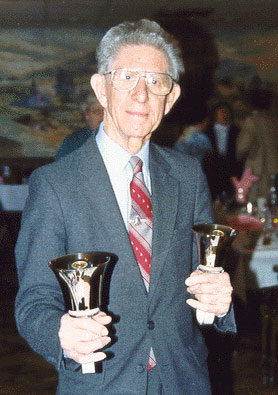 Willard
H.Markey
Willard
H.Markey
....
Willard H. Markey set as his goal in 1963 to help bring handbells into
the mainstream of the music industry. He wanted to see handbells
accepted and recognized as a legitimate member of the family of fine musical
instruments throughout the world.
He was the first person to exhibit a set of handbells at an MENC conference, hence beginning the process of bringing bells into music education. As a result, handbells have been displayed at every MENC National Biennial Conference since 1963 as well as there being many concerts and workshops offered to educators.
For many year, Willard served as the "un-official" photographer at National handbell events. Many of the photographs through the years found in OVERTONES, the official organ of AGEHR, were taken as he attended Festivals and Seminars. He was a strong supported of HIC and spent many hours in the exhibits. His dry wit carried over into a "half bell" formplaying half notes and a musical golf putter (made a beautiful "Ping").
AGEHR bestowed the honor of Honorary Life Member in 1980. He died in 2003, and he is sorely missed.
Woodrow D. McKeehan, known to all as "Mac," served the Guild in many capacities on both Area and National levels. For more than 40 years he was the Director of Music at First United Methodist Church in Bartlesville, OK, and it was there that he first became interested in handbells. His choirs participated in many AGEHR festivals, and Mac himself often participated as a solo ringer and clinician.
He served as Area IX Chairman in the late 1960's and early 1970's (before the Areas were realigned to twelve), and then he served as National Registrar from 1971-75. In 1975, Mac was elected National Treasurer, a position he held until 1983. During his tenure as Treasurer, he did much to help the Guild plan wisely for its future.
At the National Board of Directors' meeting in 1983, the W. D. McKeehan Scholarship was established as tribute to all that Mac had done for AGEHR. In the years since its establishment, many individuals have received scholarships to attend either a National Festival or a National Directors' Seminar. Also, in recognition of his service to the Guild, he was made an Honorary Life Member in 1984.
Mac and his wife, Betty, had three children, six grandchildren, and one great grandchild. Betty died on November 14, 1987, and two weeks later, following an extended illness, Mac died on November 28, 1987. Mac's enthusiasm and dedication will long be missed, and the work he did and the financial foundations he laid will benefit AGEHR for many years to come.
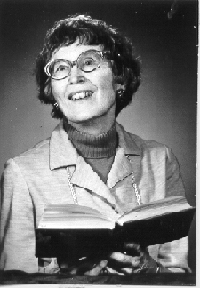 Ellen
Jane Lorenz Porter
Ellen
Jane Lorenz Porter
There is an excellent article in the January/February 1996 issue of Overtones, written by Ellen Jane telling of her extensive handbell experience. This is a "must read" for anyone who really wants to learn about this remarkable lady. It is also reptinted in the History Compilartion published for the 50th Annivrsary.
Perhaps she is best known for her many handbell compositions and arrangements. As you probably know, Ellen Jane was a member of the Lorenz Publishing Company family, and the company published many of her works. She was so prolific that she felt it necessary to publish many of her works under other names. Her dry wit carried over in the selection of these names.
She and her husband collected bells, and her collection included bells from around the world. They did quite a bit of travel, and almost everywhere they went, they would get a bell. All of them are special, and each has an interesting story. Ellen Jane donated some of these bells for placement in the future AGEHR Museum.
Ellen Jane was also known for her repertoire of bell lore. She lectured at national festivals and other handbell events, and her classes were always well attended.
Ellen Jane Lorenz was named Honorary Life Member in1978. She diedin
January of 1997.
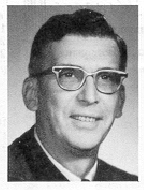 .Marvin
E. Reecher
.Marvin
E. Reecher
Marvin E. Reecher served four years as the AGEHR Vice President, then succeeded Robert Hieber to become the Guild's third President, serving from 1963-67. He was named Honorary Life Member in 1967.
He set an all time festival attendance record in 1971 by taking 110 ringers from Boston Avenue to the National Festival in Morehead, KY.
Marvin lists as one of his special memories the honor and pleasure he received conducting 1500 ringers at a National Festival in Orland, Florida.
In her book, "The First Quarter Century; 54-79," Elizabeth Bradford
writes the following:
"Another enthusiastic contributor to the spread of bellringing was
Helen M. Runkle, a quiet, self-effacing musician from Gloucester, MA.
She had a small set of bells but arranged the music so skillfully that
it was most delightful to hear. Her six Cape Ann Ringers rang from
memory, expertly handling the two octave set without using a table.
"Ringers in charge of more than two bells had their bells conveniently hung from ribbons around their necks. One hanging bell could be exchanged readily for another. It was delightful to watch the graceful, spirit, and sensitive ringing.
"Mrs. Runkle, though modest and self-effacing, succeeded in being among the first, if not the first, to have her bell arrangements published by J. Fischer and Brothers. Many a beginning group, or groups with as few as two octaves of bells, have enjoyed using her HANDBELL CONCERT, published in 1959."
In the September 1974 issue of OVERTONES, Richard Litterst wrote In Memoriam to Helen Runkle:
"I knew Helen Runkle only through her work with handbells. For many years we would renew our acquaintance each August at Castle Hill in Ipswich, Massachusetts. During the 1950's, it was almost a tradition that she would bring her Cape Ann Ringers from Glouchester for one of the demi-concerts. There would always be five young girls of post senior high age who would stand in a single line and play, from memory, a program on the small diatonic set of bells numbering about 17 altogether.
"Little used extra bells were hung on a ribbon around the neck; when such a bell was needed, one of the main bells (right or left hand, was temporarily retired to the little finger of the other hand, thus freeing one hand to ring the suspended bell. Extra bells for other pieces rested at the feet of the ringers.
"On May 23, 1974, Helen Runkle died. Of her work for, and participating in, the New England Guild of English Handbell Ringers and the early days of the formation the American Guild of English Handbell Ringers, we are, indeed, the beneficiaries. It was most fitting that she held honorary membership in AGEHR. God bless!"
Ronald J. Schink had the dubious honor of being appointed National Festivals Chairman by eight AGEHR Presidents, beginning with Richard Litterst in 1967 and continuing through the presidencies of Robert Ivey, Donald Allured, Nancy Poore Tufts, James Salzwedel, Mary McCleary, David Davidson, and Mary Kettelhut! From 1967 through 1985 he traveled thousands of miles visiting campuses and convention centers, selecting sites for National Festivals, and negotiating contracts for rooms, meals, classrooms, and social activities at the Festival sites.
He also handled all the registrations for the Festivals, and, from his home in Napoleon, Ohio, he did the tremendous amount of paper work required for all these responsibilities!To many of us, he was the one who, year after year, welcomed us at the Festival registration desk! Ron became well-known for making things seem to run smoothly no matter what unexpected obstacles got in the way. He also organized and was the tour guide for the Guild's 25th Anniversary Tour to England in 1979, and in 1984 he organized and led a tour for adult ringers on a Guild-sponsored ringing tour of Europe.
Ron organized his first bell choir in 1961 and became a member of AGEHR in 1961. In 1962 he was Chairman of Area V and from 1963-1967 served as Festival Chairman for Area V. When his term as Area V's Festival Chairman ended, he began his 18 years of continuous service as National Festivals Chairman!
For his service to AGEHR, and especially for his many years as National Festivals Chairman, Ron was made an Honorary Life Member in November of 1988.
In the May 1993 issue of OVERTONES, Mary Kettelhut wrote In Memoriam:
"AGEHR has lost a friend and worker. Ron Schink passed away on February 25th.
"At the funeral service held for Ron, a tribute was ready by Pastor Michael Rothgery, a former ringer. He said in part, 'Emmanuel Lutheran Church (Ron's church of service for 32 years) is known from the White House to Hawaii and from England to Vienna because of Ron. Ron took the young men of this congregation who may have never seen farther than the corn fields of Henry County, and showed the the World. ....
"We of AGEHR extend our heartfelt sympathy to Nancy and the Family. It was a privilege for us to know Ron and to work with him. He will be missed, but his good works will be remembered by all who knew and loved him. He played a big part in uniting people in this musical art."
Frederick Sharpe.
Martha Lynn Thompson wrote in 1991 that it was difficult to find information about the Englishman, Frederick L. Sharpe, and most of what has been gathered is due to the kindness and fine memory of Richard Litterst and to early OVERTONES articles written by the Alinda B. Couper.
Mr. Sharpe was probably the foremost English authority on tower bells and he wrote extensively about the history, etc. of countless bell towers. He could be called the "curator" of Bell Towers as he was a specialist on the strains and stresses of these structures. He would receive calls from all over the world, and if facts were stated accurately, he could diagnose what was wrong with the tower and send a prescription to fix it.
At the 1963 National Festival in Detroit, Frederick Sharpe was the honored guest. He taught the ringers how to ring changes, and he listened to the massed concert of 800 ringers, the like of which he had never seen or heard. For the final concert he had been given a small bell, and after the group had played the last chord, he rose from his seat and played his bell so that he might go home and say that he had run with the largest gathering of handbell ringers ever to play together in the world! He also brought the Festival to a close by striking a number 19F# (F#4).
Richard Litterst is quoted as saying: "Fred Sharpe was quite a bell man. I should say that he brought status to AGEHR, rather than the other way around."
In the May 1976 issue of OVERTONES, Nancy Poore Tufts wrote In Memoriam of Frederick Sharpe:
"Bell ringers and architects of England and America were grieved to hear of the passing of Frederick Sharpe ("Mr. F#"), FSA, of Oxfordshire in February, 1976.
"A former President of the Central Council of Church Bell Ringers of Great Britain, a respected church architect specializing in the restoration of towers and ancient church fabric, a renowned campanologist in the true meaning of the term, an excellent Church Ringers and Handbell Tune Ringer, Mr. Sharpe was the author of a number of books on bells of the various Shires of England, personally having examined and identified and recorded many forgotten and unusual bells.
"Mr. F# endeared himself when he consented to attend the Detroit Convention of 1963 as guest campanologist and clinician. ... Those who met him will never forget the large smiling Englishman perspiring in the Detroit humidity! ...
"We will never forget Mr. F#. " MPT
Margaret Shurcliff was the first person of record in the United States to own a set of English handbells. At the end of the 19th-century, Margaret and her father, Dr. Arthur Nichols, had journeyed to England, apparently several times, for the purpose of restoring the tower bells of Boston's Old North Church to their original use. While in England, the Nichols became change-ringing enthusiasts. Margaret was the first woman from America to ring a peal on tower bells, as well as two peals on handbells. She returned home with her own set of Whitechapel handbells in 1902.
She introduced numerous people to handbell ringing, began the first "community group" in Boston, and started the Christmas Eve tradition of playing carols outside on Beacon Hill. The contagious joy of ringing spread enough that in 1937 ringers met at Mrs. Shurcliff's home to form the New England Guild of English Handbells, with Mrs. Shurcliff becoming its first president.
By 1954, handbells had spread beyond the New England states, so the idea of an American Guild was proposed, along with the new concept of a handbell festival. . On Feb. 6, 1954, three members of the New England Guild met at the home of Mrs. Shurcliff to make plans for the first handbell festival, and at a meeting on May 24th of that year, Mrs. Shurcliff became the first president of AGEHR. Another member present at that meeting, Mrs. Bessie Erb, went on to become the second president.
The purpose of both Guilds was to exchange music (none was published at that time), exchange ideas and techniques, and "free" ringing together. The extent of their formal meetings was to meet one evening each spring for supper, business meeting, and a public concert. AGEHR still carries on these traditions.
Richard Litterst wrote: "There was a surging desire to honor Margaret Shurcliff in appropriate ways. A major recognition had already been granted: Her hand, holding a handbell, became enshrined in our Guild Seal and on our membership pins."Margaret Schurcliff was named Honorary Life Member posthumously in 1998. She died in 1959, only four years after forming the Guild.
AGEHR -- "Uniting People Through a Musical Art."
concerning this page.